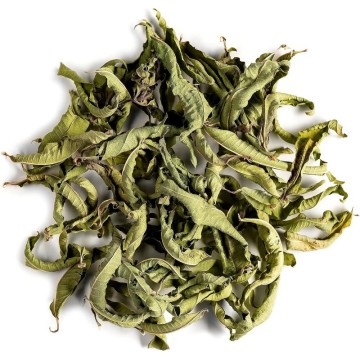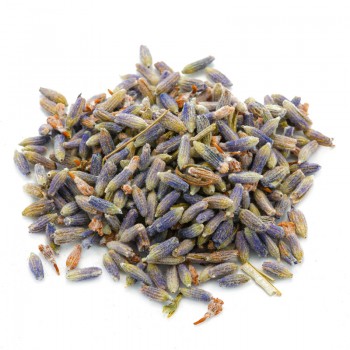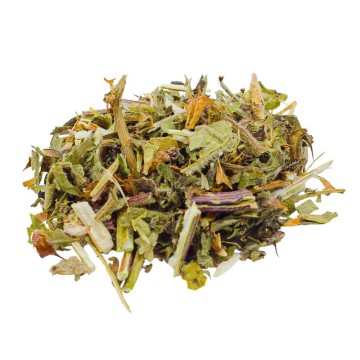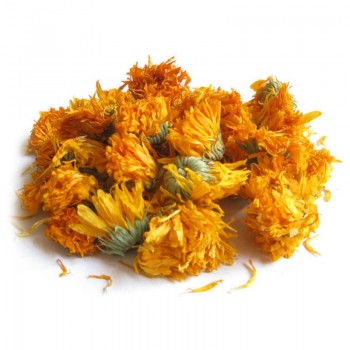Angelica archangelica root has been known for centuries for its beneficial characteristics on our well-being.
It derives from the perennial herb used by alternative medicine, to treat various conditions and ailments, thanks to the substances it contains: oils, precious acids, tannins and vitamin B1.
Angelica root: properties and benefits
The phytochemicals of Angelica root possess tonic, stimulating, digestive and carminative properties - they soothe stomach pains and help eliminate intestinal gas.
For this reason the Angelica root used for herbal tea has always been used against states of stomach irritation, where gastric disturbances are accompanied by acidity or hypoacidity.
These properties are excellent, therefore, in case of indigestion, stomach pain, and colic.
It is also known to stimulate the appetite, in case of lack of appetite.
The small doses of volatile oil contained in Angelica (root), has stimulating effects on the central nervous system, and in folk medicine it was used in the past in the treatment of psycho- physical, as well as to alleviate the symptoms of neuralgia.
This effect on the nervous system, a natural sedative for anxiety, has been enhanced by alternative medicine also to counteract the difficulty in falling asleep.
These properties have been known for centuries, as various extracts of Angelica were used in traditional Indian medicine for the treatment of anxiety.
Angelica at the root makes expectorant and soothing substances available to combat coughs, colds, and mild flu symptoms. It is one of the roots of medicinal herbs used to calm the symptoms of rheumatism and arthritis.
The dried root of Angelica has been used for centuries as a natural antibacterial and anti-fungal, having purifying properties, also useful for improving the well-being of the urinary system.
Origins and History of cultivation
Angelica archangelica is also known as Angelica officinalis and has been known for centuries in Europe.
According to tradition, its name derives from a dream, in which a monk apparently saw Michael the Archangel, who instructed him on which herb to use to help the victims of the bubonic plague who was decimating Europe in the mid-17th century.
When it was discovered that this herb was useful for protecting and healing the plague, all the Angelica available in the countryside was collected.
According to tradition, Angelica root had to be soaked in vinegar and smelled, or kept in the mouth - then it was considered for its natural anti-infective power.
Despite this legend, we know that there were pagan festivals for the flowering of Angelica, before the Christian advent - widespread especially in Pomerania, Prussia and Livonia with songs and dances.
Angelica was considered a magical herb, of which farmers made necklaces of leaves to protect children from disease and witchcraft. It was used as a restorative tonic, after an illness, and as a natural anti-inflammatory in the case of phlegm or for the respiratory system.
In addition to these therapeutic uses, the herb is used in cooking and as a flavoring for alcoholic beverages such as gin.
On a popular level, its diffusion was possible because all over the world there are over 60 species of medicinal plants belonging to the genus Angelica, used in the ancient systems of traditional medicine, especially in the East - Chinese Angelica (dong quai) is called "female ginseng", but has different characteristics from the European one.
The American Angelica was also used by the natives of North America: the Indian tribes treated respiratory diseases with this plant.
In Europe the root is accepted today in the pharmacopoeia of several countries, as edible when presented with the herbal tea cut - peeled and then boiled.
Plant and flowers
Angelica Archangelica is a biennial plant of the Apiaceae / Umbelliferae family, which grows spontaneously in theand mountain areas, in the woods, in humid soils; especially along rivers.
It is also known as Angelica officinalis and differs from other commonly used species, which are Angelica atropurpurea (American) and Angelica sinensis (Chinese).
The spontaneous growth zone of Angelica Archangelica is mainly in Europe in the territories of Romania, Poland, Germany, Scandinavia (Norway, Denmark, Finland, Sweden, Iceland, Faroe Islands), as well as Russia and Greenland.
It is grown much more often, for its sweetly scented edible stems and roots.
It is a medium height plant, which can grow up to about 2 meters, with large leaves and greenish-white flowers, small and numerous.
Loves light and humidity, developing well in nutrient-rich and oily earth, next to running water.
The roots, leaves and seeds are used for healing and gastronomic purposes. The roots of Angelica, used in herbal medicine, are long and thick, spindle-shaped, fleshy and branched.
Flowering normally occurs from July to August, while the light yellow fruits have a strong pungent odor and a sweet to spicy taste.
Like several other Apiaceae species, its appearance is similar to some poisonous plants (Conium, Heracleum and others), so it should not be consumed unless you are absolutely sure you have it recognized.
Angelica requires special conservation for use: it retains its healing characteristics only if it is used within one year of harvesting.
Angelica archangelica is also known by other names such as Garden Angelica, Wild Angelica, Wild Celery, Norwegian Angelica.
Nutritional values of Angelica
The roots of the plant contain volatile oil, caffeic acid, chlorogenic acid, angelic acid, fumaric acid, oxalic acid, fatty acids, tannins and vitamin B1.
In addition, other phyto-chemicals include angelicin, safrole, scopeletin, linoleic acid and valeric acid.
How to consume Angelica root as an herbal tea and in the kitchen
For a good infusion, it is advisable to use for a cup (250 ml), about 3-5 grams of Angelica root, with water at 100 ° C.
Leave to infuse for 10 to 12 minutes, before drinking the herbal tea.
A cup of herbal tea a day is useful in case of psycho-physical fatigue, aerophagia, migraines and gastric disorders.
For uses in the kitchen, we know that angelica root is used for its aromatic characteristics in the production of gin, vermouth, other liqueurs or bitters. It initially tastes sweet, then it will become musky.
Even the most tender leaves of this plant are used, which can be added to mixed salads, instead of spinach, and have a bitter taste. The central ribs of the leaf, on the other hand, are steamed and blanched, used as celery. Stems are also eaten in Iceland and Finland.
The leaves can also be used for infusions, or they will be candied as a garnish or decoration.
Angelica seeds can also be used to make herbal teas, or to flavor liqueurs, cakes and candies.
Angelica root: side effects and contraindications
The plant is not recommended for pregnant women and who are breastfeeding of newborns.
Also, some people may experience an upset stomach feeling if a combination of Angelica root and other herbs is used.
Avoid taking Angelica before sun exposure , as it contains phototoxic substances (psoralens).
Remember that the root must always be used when completely dried, for food use.
![]()











 No reward points for this product.
No reward points for this product.















